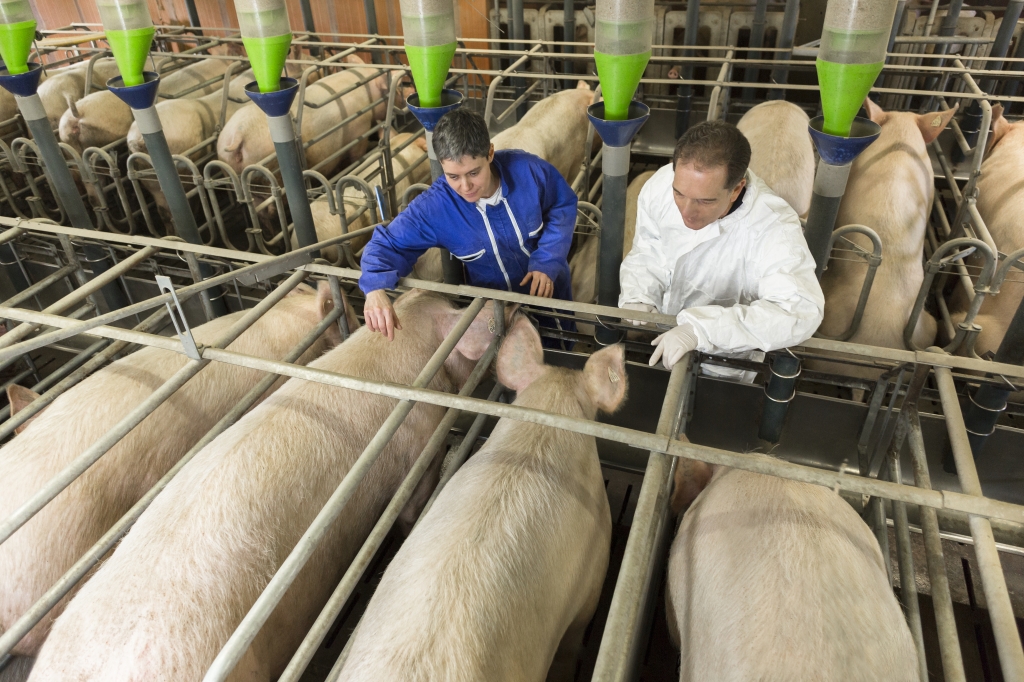
Zoetis receives European Commission Marketing Authorization for CircoMax® Myco.
Zoetis Receives European Commission Marketing Authorization For CircoMax® Myco
Zoetis today announced that the European Commission has granted the company marketing authorization for CircoMax® Myco for the active immunisation of pigs against porcine circovirus type 2 (PCV2) and Mycoplasma hyopneumoniae.
In a one-shot injection, CircoMax® Myco offers the longest lasting combined protection on the EU market against PCV2 and M. hyopneumoniae pathogens. This reduces the PCV2 viral load in blood and lymphoid tissues, PCV2 fecal shedding, lymphoid tissue lesions associated with PCV2 infection, and lung lesions associated with M. hyopneumoniae infections. Pig protection was demonstrated against porcine circovirus genotypes 2a, 2b and 2d and lasts for at least 23 weeks after vaccination in fattening pigs for both PCV2 and M. hyopneumoniae.
“Porcine circovirus type 2 has demonstrated high mutation and recombination rates and is known to be rapidly evolving in Europe and worldwide. Commercial PCV2 vaccines have been efficacious in controlling the clinical disease, but there is a growing genetic gap between field viruses and vaccines. So far, all vaccines in Europe have been based on one single genotype, PCV2a, while today the most prevalent viruses found belong to other genotypes: PCV2b and especially PCV2d,” said Monica Balasch, Director, Global Biologicals Development, Zoetis. “We believe that there is a need for new vaccines, like CircoMax® Myco which includes two PCV2 genotypes for a broader coverage. We found excellent results showing reduction of body weight gain losses in field trials in the EU. This innovative one-dose vaccine is a new tool for veterinarians and producers that may improve their PCV2 and M. hyopneumoniae control programs, especially in the face of multi-genotype PCV2 infections.”
“We are excited to bring CircoMax® Myco to Europe,” said Alvaro Aldaz, Director, Global Commercial Development, Swine, Zoetis. “For many years, intensive vaccination has contributed to selective pressure and emergence of new PCV2 genotypes. European pig farms are often infected with more than one genotype and subclinical disease is frequent. Commercial vaccines are all based on PCV2a genotype while CircoMax® Myco is the first vaccine that includes two PCV2 genotypes (a & b), and the inventive M. hyopneumoniae purified fraction. It is formulated with MetaStim® for active immunization, resulting in 23 weeks of protection against these threats.”
CircoMax® Myco is a veterinary vaccine that contains inactivated recombinant chimeric porcine circovirus type 1 containing the porcine circovirus type 2a open reading frame 2 (ORF2) protein, inactivated recombinant chimeric porcine circovirus type 1 containing the porcine circovirus type 2b ORF2 protein and inactivated Mycoplasma hyopneumoniae, strain P-5722-3.
The efficacy and safety of CircoMax® Myco are supported by a comprehensive program of clinical studies reviewed by the European Medicines Agency and included in the regulatory procedure approved by the European Commission.
About PCV2
Porcine circovirus type 2 (PCV2) is the pathogen associated to porcine circovirus diseases (PCVD) and one of the main pathogens in the global pig industry, which has brought significant economic losses to the pig industry.
PCV2 is the causal agent of Porcine Circovirus Systemic Disease (PCV-SD), previously called post-weaning multisystemic wasting syndrome (PMWS) and may result in secondary infections, particularly respiratory & reproductive diseases, diarrhoea, porcine dermatitis and nephropathy syndrome (PDNS) in infected pigs.
Mycoplasma hyopneumoniae causes economically very costly respiratory disease and is a core pathogen in the porcine respiratory disease complex (PRDC) that involves viruses, and enzootic pneumonia (EP) when associated to secondary bacteria.
More from Zoetis
- Vets encouraged to engage with their farmers on the importance of orf vaccination
- Zoetis Hosts Free Webinar to Share Latest Knowledge of Lungworm
- Vets Urge Action as Dog Arthritis Misconceptions Persist
- Zoetis Acquires Veterinary Pathology Group to Strengthen Veterinary Diagnostics in UK and Ireland
- Zoetis to Unveil End-to-End Support for Veterinary Care at London Vet Show 2025

 5 years ago
5 years ago  1575 views
1575 views
